Visual Capitalist’s Top 20 Visualizations of 2020
 |
What can be said about 2020 that hasn’t already been said? Simply put, it was a wild ride. Not only did these past few months provide a multitude of topics for us to dig into, our growing team produced far more original work than ever before.
This is now the seventh edition of our yearly round-up. One noteworthy change is in the name. It’s no longer the “Top Infographics”, which reflects a broader shift to different styles of visual communication. We live in a complex, volatile, multi-screen world, and our visualizations are becoming more nimble to keep up this fast pace.
Below is a selection of our most noteworthy work. Some pieces have been selected because of their wide reach, while others broke new ground in design and data-driven reporting. For the top picks, members of our team will provide some commentary on the concept and context.
Let’s dive in to our list of the top visualizations of 2020.
Editor’s note: Click on any preview below to see the full-sized version of a visualization.
Visual Capitalist’s Top 20 Visualizations of 2020
#20
The Soaring Value of Intangible Assets in the S&P 500
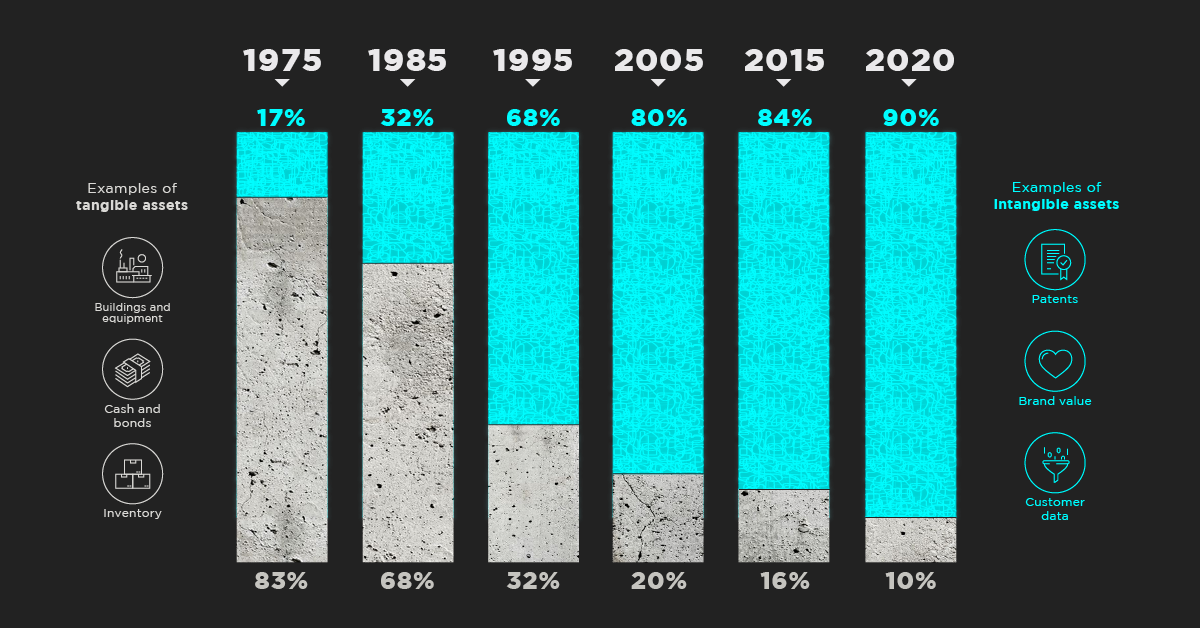 |
The ascent of tech firms since the 1990s has brought about a massive change in the asset mix of publicly-traded companies, with the share of intangibles currently at unprecedented levels. This infographic charts the growth of intangible assets in the S&P 500 over time, providing a glimpse at how prevalent technology has become in our lives.
#19
Tech’s Bizarre Beginnings & Lucrative Pivots
 |
Imagine Samsung trading dehydrated fish and Nokia selling rubber boots. It’s bizarre, but that’s exactly how some tech giants started their journey. In this infographic, we show the unusual beginnings of recognizable tech brands and the pivots that helped earn their success.
#18
Charting the $1.7B Transfer of Military Equipment to Police Departments
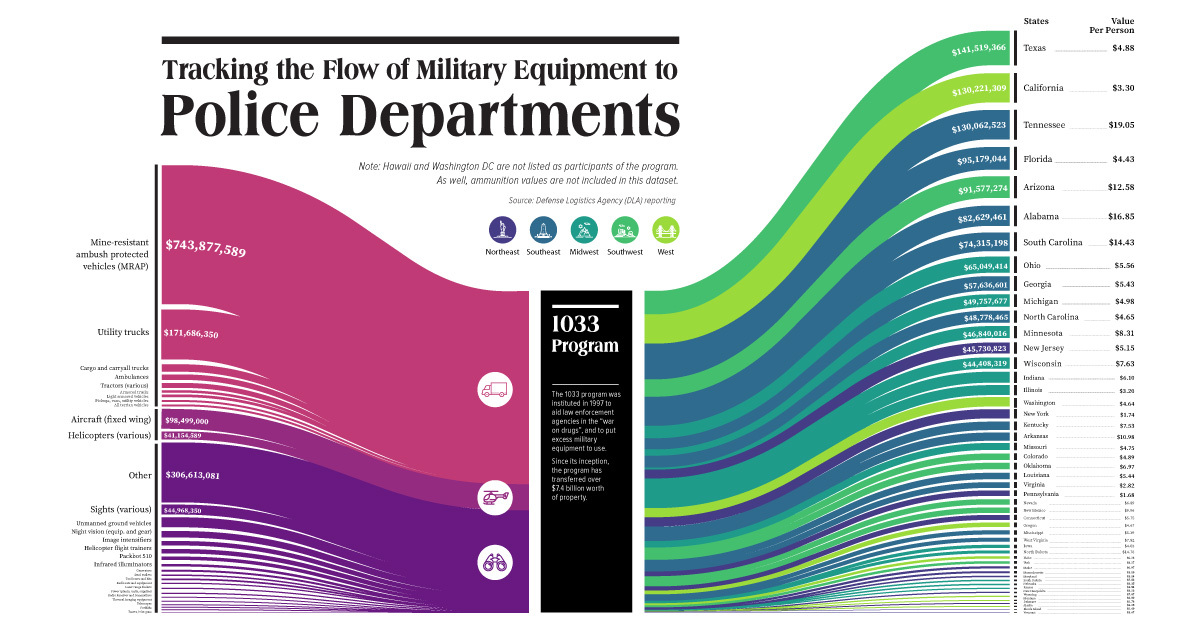 |
From office supplies and thermal underwear to mine-resistant vehicles and helicopters, a plethora of outdated military equipment has been transferred to police forces through the 1033 program. This visualization tracks the flow of $1.7B worth of military equipment to law enforcement over the past decade at the state and department levels.
#17
Visualizing the Footprint of Highways in American Cities
 |
Highways not only enabled a new era of connectivity, but also utterly changed the course of development in American cities. These animations show how highways reshaped the downtown cores of six American cities and provide background on the interstate highway system.
#16
How Many People Die Each Day?
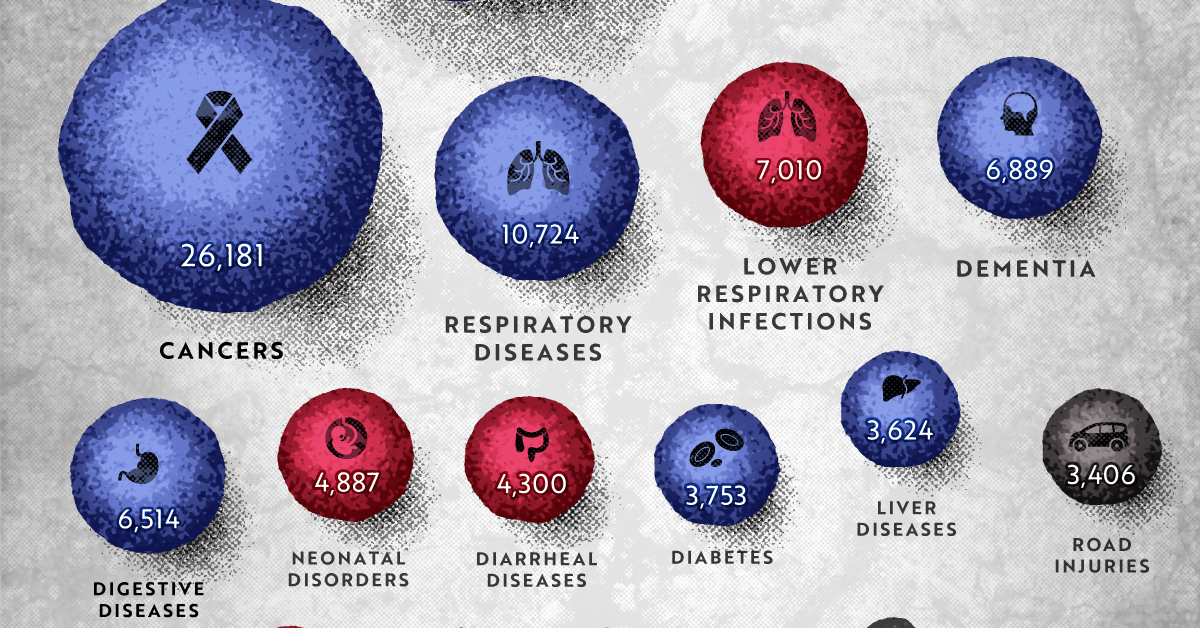 |
COVID-19’s daily death toll numbers have taken center stage in the media, with recent December numbers in the neighborhood of 10,000 to 15,000 deaths per day globally. But without any frame of reference, these numbers can be hard to put into perspective.
Which diseases are the most deadly, and how many lives do they take per day? This infographic visualizes average daily deaths by cause and country, showing how many lives are claimed by various diseases and instances on a daily basis.
#15
Visualizing the Countries Most Reliant on Tourism
 |
Looking at which countries were most reliant on tourism was especially important in a year where travel changed dramatically. This chart breaks down the countries with travel and tourism sectors that make up more than 15% of national employment.
#14
Prediction Consensus: What the Experts See Coming in 2020
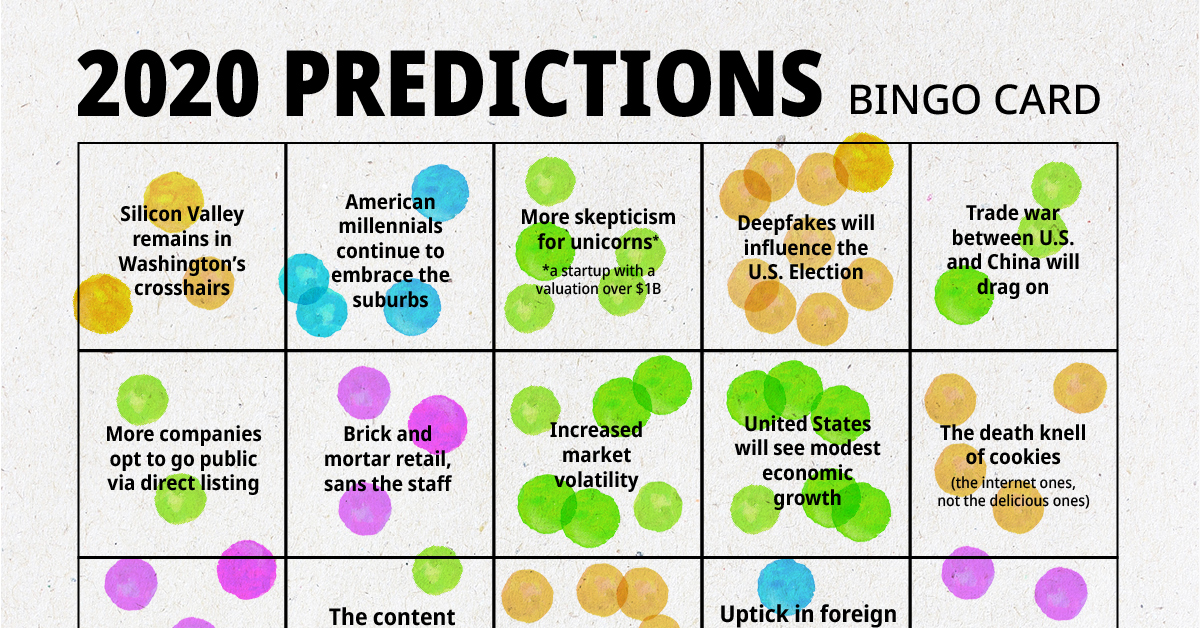 |
There was no lack of predictions from pundits and prognosticators as we approached the beginning of a new decade. As 2019 drew to a close, we compiled hundreds of predictions to get a broader sense of what the experts saw coming in the year ahead. (Spoiler alert: Nobody had global pandemic on their bingo card.)
#13
How COVID-19 Has Impacted Media Consumption, by Generation
 |
COVID-19 changed a lot of things about daily life, but how did it impact the way we consume media? This graphic looks at the trends in media usage by generation and the type of media being consumed. Overall, Gen Z, Millennials, Gen X, and Boomers all increased their time looking at media in 2020.
#12
Mind-Bending Medicine: An Overview of Psychedelic Substances
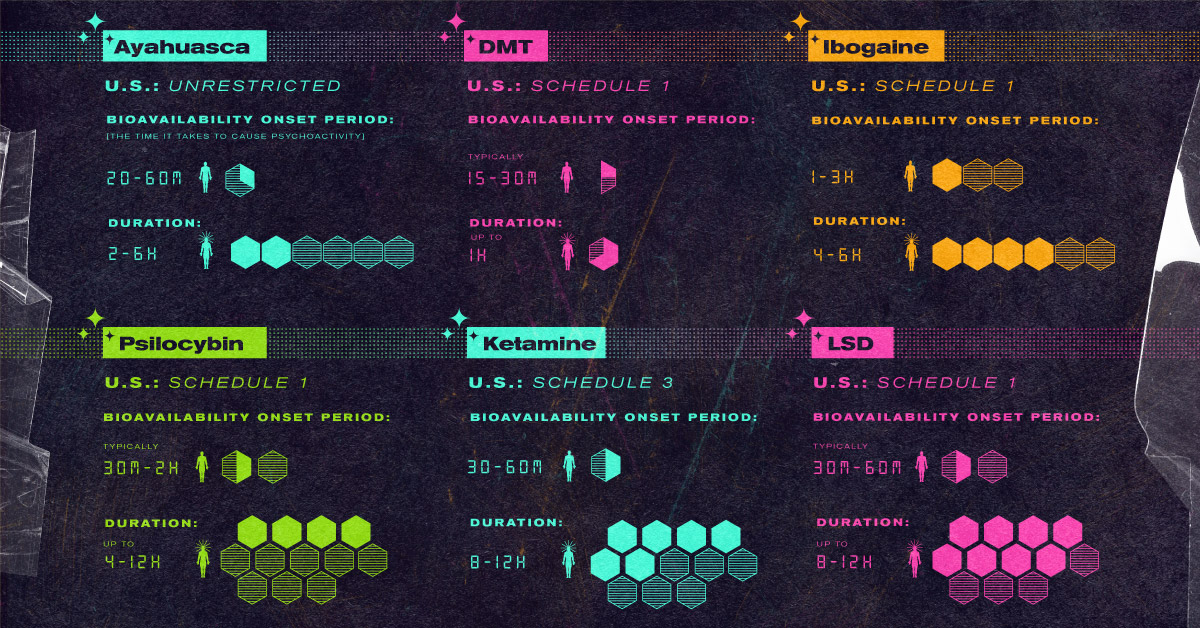 |
With the growing awareness around mental health, the use of psychedelic substances for treating mental health disorders is becoming less speculative and more mainstream. This infographic is an eye-opening overview of seven of the most common psychedelic substances and examines the mind-bending ways in which they could transform mental health.
#11
Making Billions: The Richest People in the World
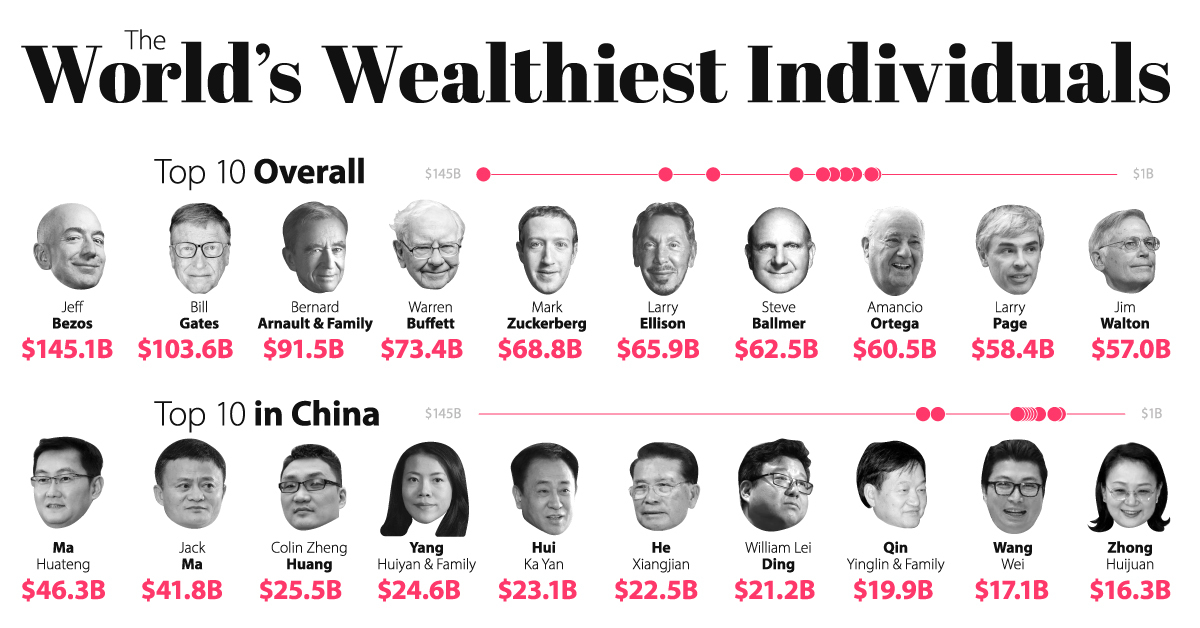 |
This graphic from September reveals the world’s richest people across multiple categories. Peruse this graphic to see some familiar faces like Mark Zuckerberg, some of China’s richest people, like Jack Ma, and, of course, the world’s richest man, Jeff Bezos.
#10
The Race to Save Lives: Comparing Vaccine Development Timelines
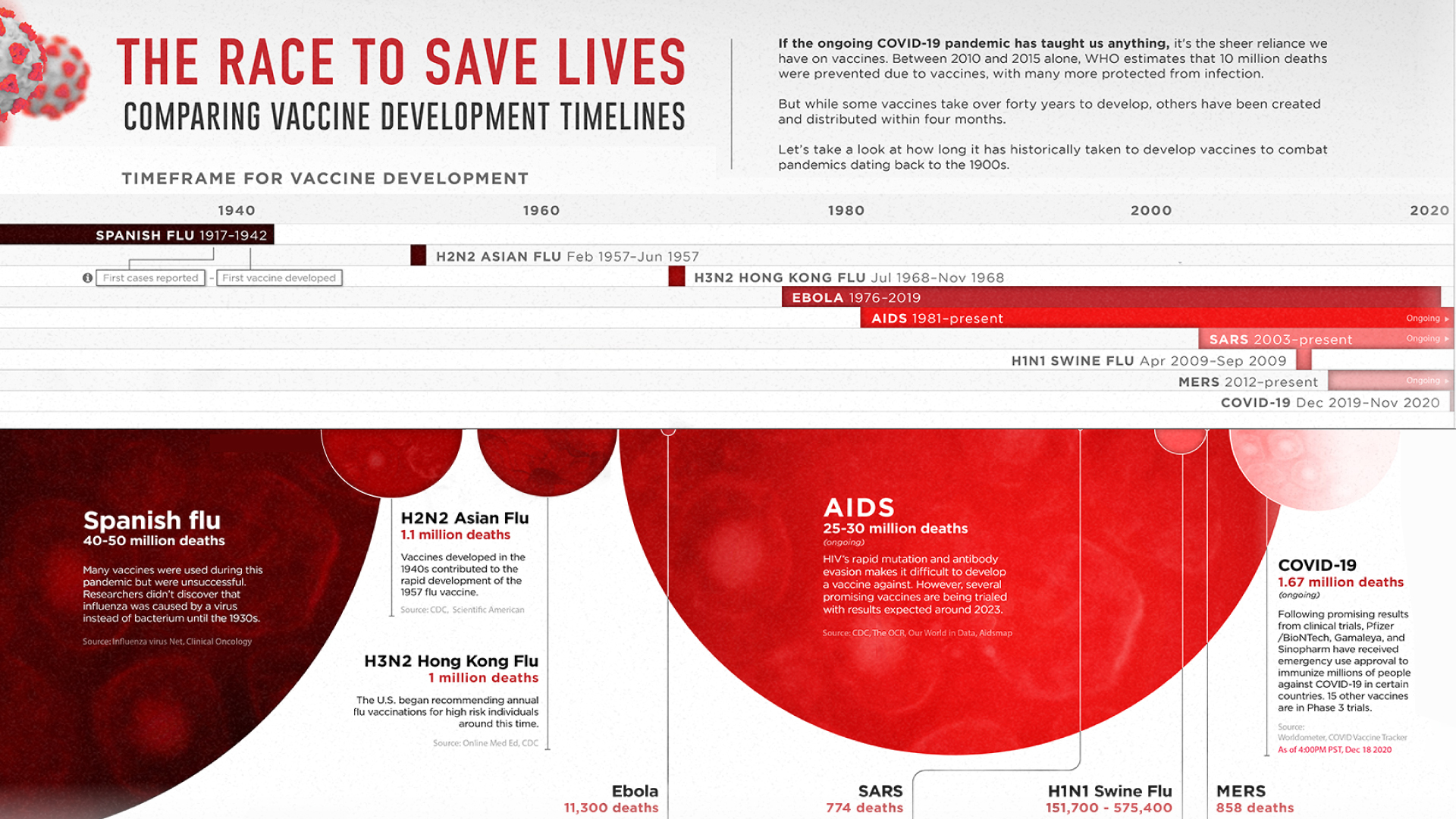 |
This in-depth visualization showed us the historical rate of development for the world’s vaccines. Understanding how the development process works was more important this year than usual as many people had questions about COVID-19 vaccines in the pipeline.
#9
Zooming In: Visualizing the Relative Size of Particles
 |
The coronavirus has made us well aware of the impact microscopic things can have on our lives. From virus particles and wildfire smoke to a grain of salt and fine beach sand, this infographic zooms in to visualize the relative size of particles that are often smaller than the eye can see.
#8
Visualizing the Length of the Fine Print, for 14 Popular Apps
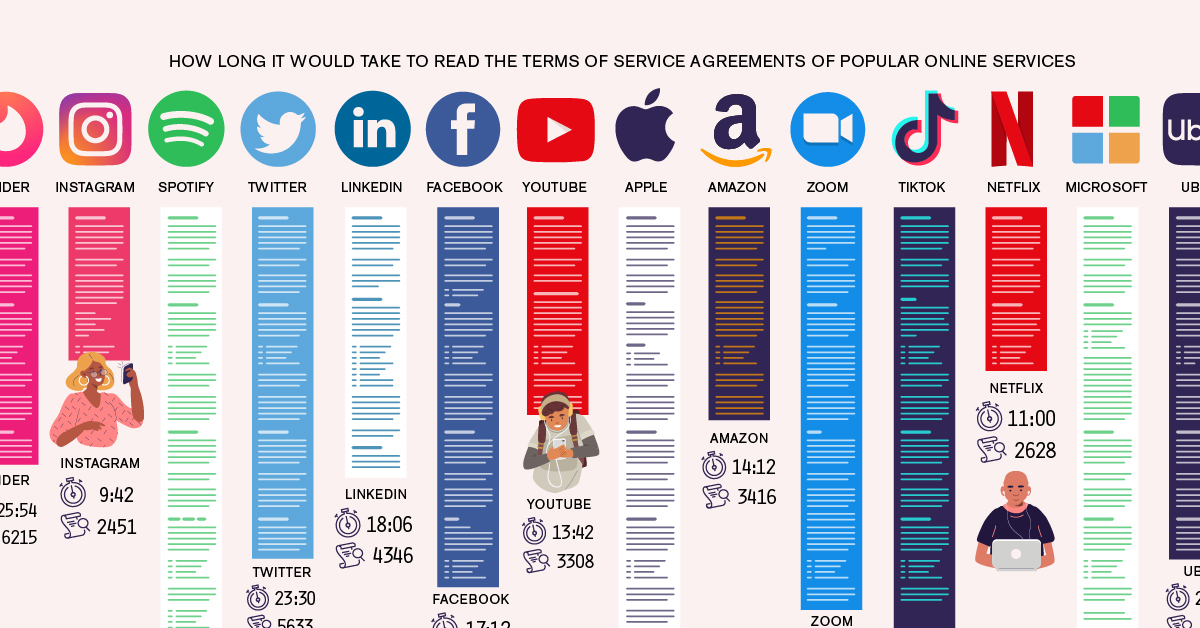 |
In a year with more people relying on technology than ever, how many of us truly know what we sign up for?
This infographic–which was inspired by an art exhibition by Dima Yarovinsky–revealed just how lengthy and arduous terms of service agreements are for some of the most popular apps, and how long it would take to read them.
#7
U.S. Dollar Performance After U.S. Elections
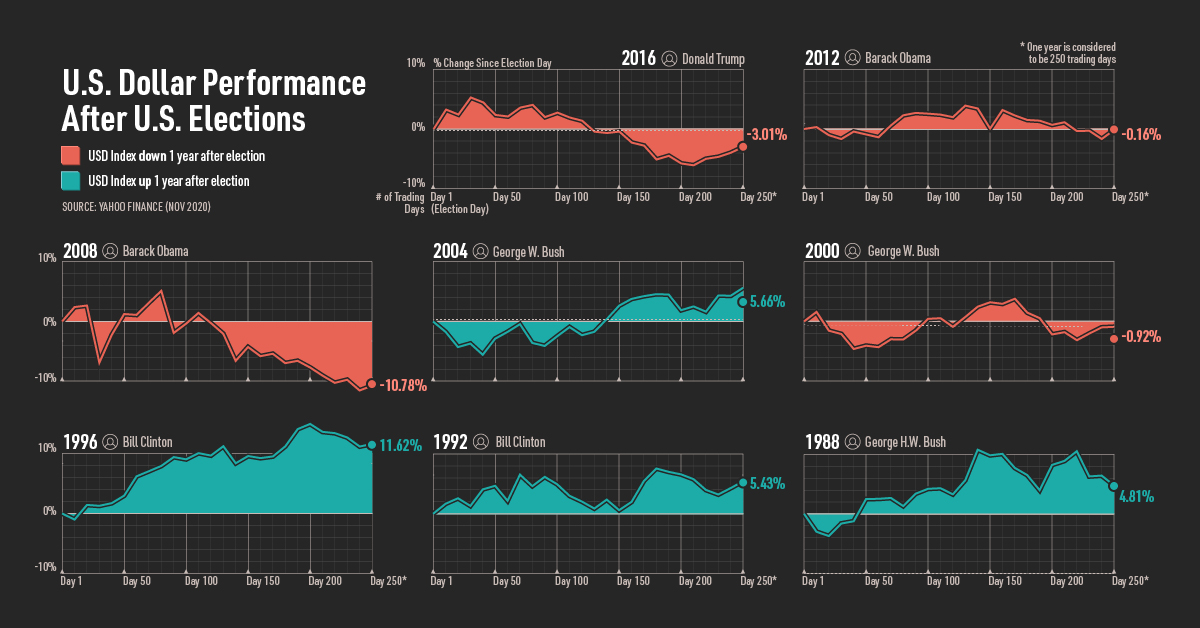 |
A turbulent election year for the U.S. meant many were examining the potential of the election on markets—both before and after November. Our recent look at U.S. dollar performance after U.S. elections took a closer look at the influence elections really have on the market.
#6
Visualizing the Expanse of the ETF Universe
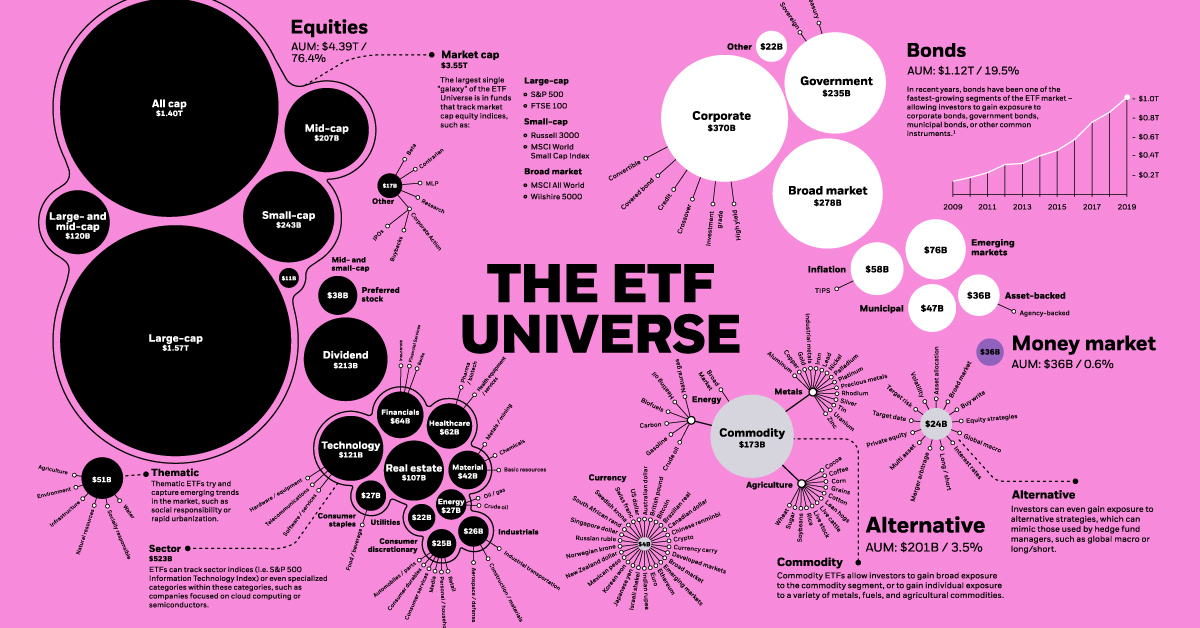 |
Since the establishment of the first U.S. exchange-traded fund (ETF) in 1993, ETFs have gained traction as a convenient way of investing in multiple stocks. In terms of assets under management, the ETF universe is almost five times what it was just a decade ago.
In this visualization, we show the expanse of the $5.75 trillion ETF universe that covers almost every investing niche.
#5
The Economics of Coffee in One Chart
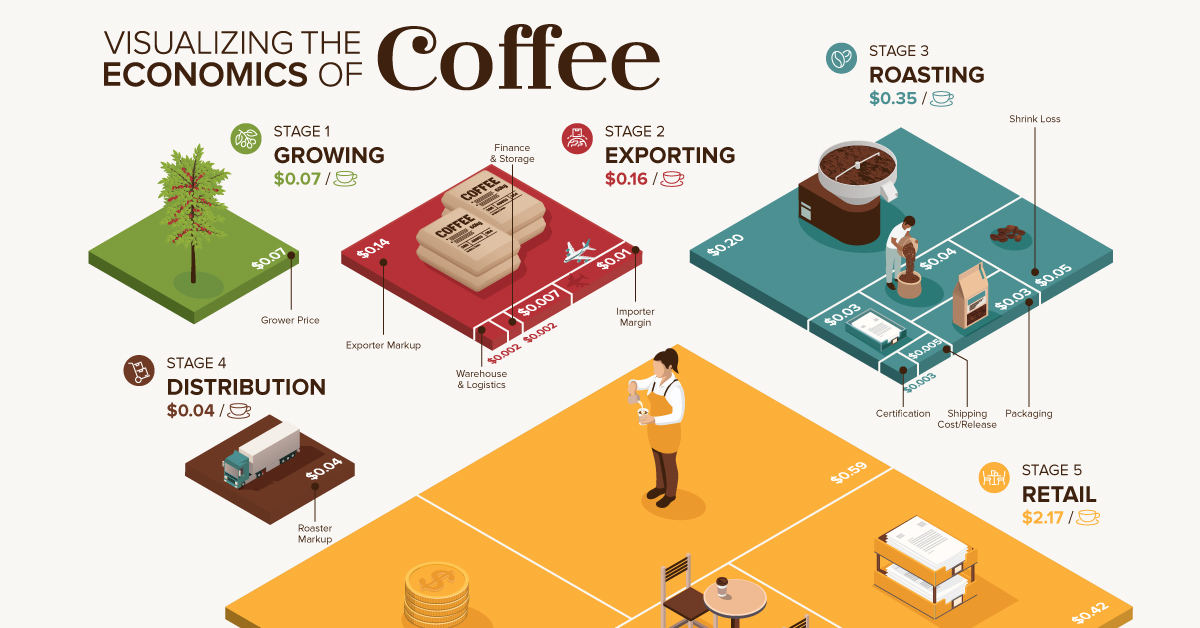 |
Words by Omri Wallach
If you’ve purchased even one cup of coffee this year from a nearby café, you’ve participated in the $200+ billion global coffee supply chain. Yet few of us understand the amazing journey coffee makes from beans to cup, nor the costs associated with them (and who profits).
This infographic breaks down the costs incurred by retail coffee production for one 16 oz (475ml) cup of brewed coffee. From growing and processing beans to a massive export and roasting market, it reveals the underlying costs that factor into every cup of coffee you consume.
#4
The Math Behind Social Distancing
 |
Words by Nick Routley
Along with zoom and flatten the curve, the term social distancing entered our collective lexicon. While the benefits of avoiding extraneous human contact during a pandemic can be easily understood at the individual level, the downstream effects are harder to understand.
Our goal with this graphic—which was published just two weeks after the pandemic was declared—was to provide an impactful example of how a reduction in social exposure would theoretically contain the spread of infection. And time was of the essence. Previous research had shown that the sooner distancing measures were put in place, the more effective they were at curbing local outbreaks.
#3
The Front Line: Visualizing the Occupations with the Highest COVID-19 Risk
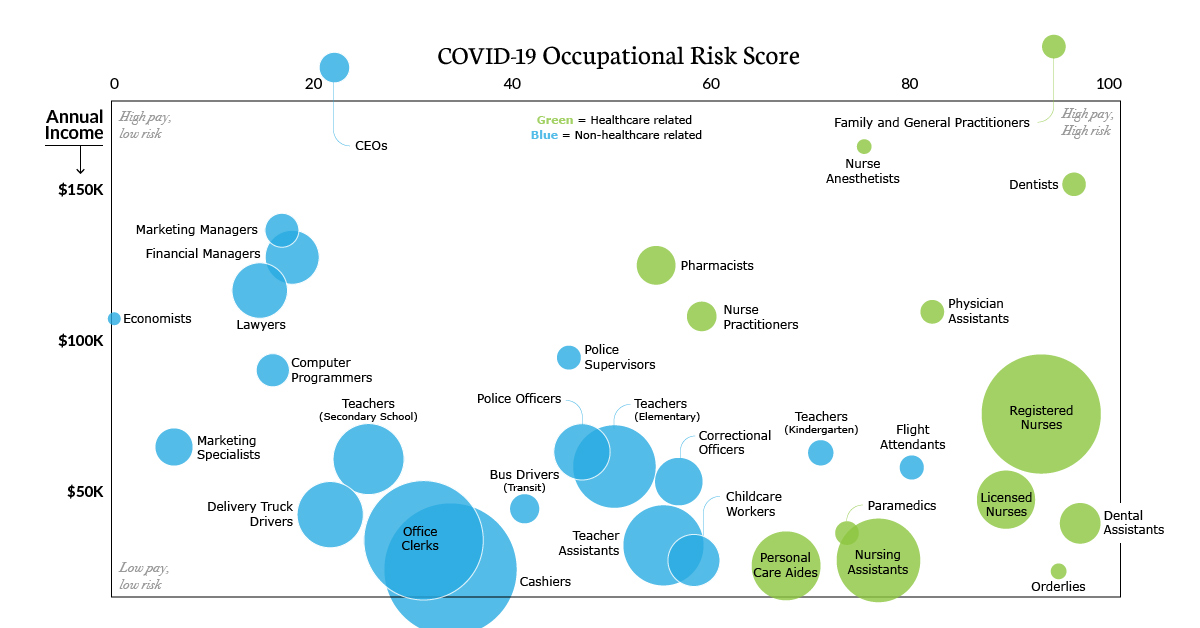 |
Words by Nick Routley
After the shock of the pandemic wore off, people began to ask more practical questions about how it would impact their day-to-day life. One of those questions was: will my job put me at risk for contracting coronavirus?
We looked to answer that complicated question by digging into the U.S. Department of Labor’s massive O*Net database, which has classified nearly every type of occupation based on a number of attributes. We selected specific attributes and gave each job a score, making it easy for people to evaluate occupational risk in their own life.
There were a number of ways the information could be charted, but in the end we decided to plot risk against annual income.
#2
50 Years of Gaming History, by Revenue Stream
 |
Words by Omri Wallach
The COVID-19 pandemic hit many sectors hard, but gaming was not one of them. The market continued growing its ever-rising tsunami of revenue, new consoles were launched, and tech giants entered the playing field to try their hands at capturing the cloud streaming market.
But how did 2020’s estimated $165 billion gaming market come to be? This historical timeline examines the rise of gaming revenue from the arcade boom to the console and PC invasion, culminating in the rapid rise of mobile gaming. Considering revenues have been adjusted for inflation, it clearly demonstrates the upwards momentum of media’s biggest earning sector.
#1
Visualizing the History of Pandemics
 |
Words by Nicholas LePan
In 2020, the COVID-19 virus swept the world and forced nations to shutter their economies to protect their citizens. However unique this virus is to our current time, the world has faced pandemics before, so Visual Capitalist looked to the past.
The History of Pandemics infographic compared the death toll from the COVID-19 virus to other historic pandemics all the way back to Roman times. However, as time revealed the growing impact of the COVID-19, this infographic was updated to tally the growing death toll.
We are still in the midst of this pandemic and the final impact is still uncertain. But undoubtedly, COVD-19 defined 2020 and will continue to do so in 2021 and beyond.


No comments:
Post a Comment
Note: only a member of this blog may post a comment.